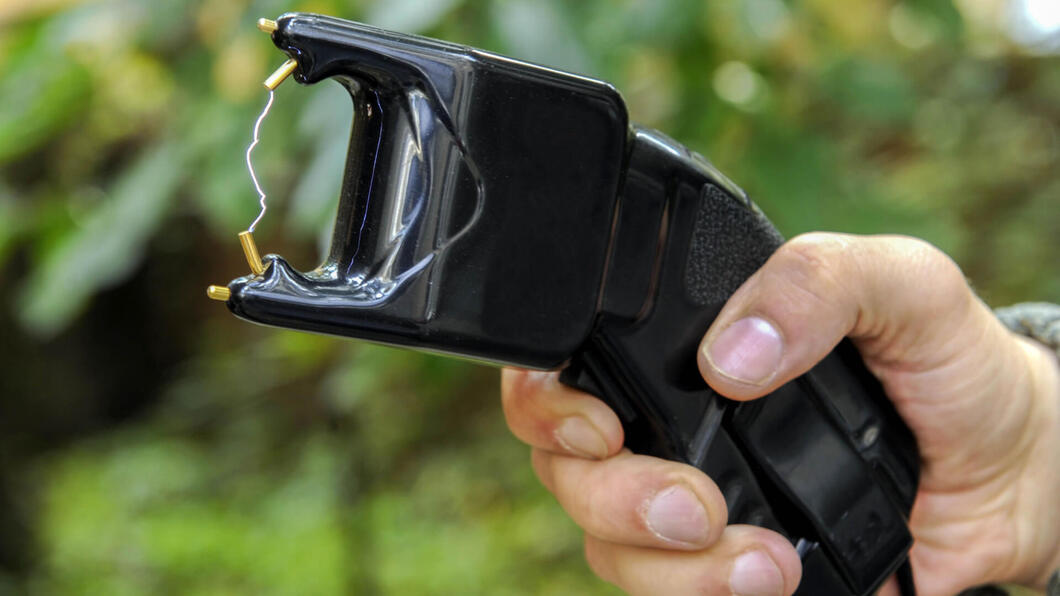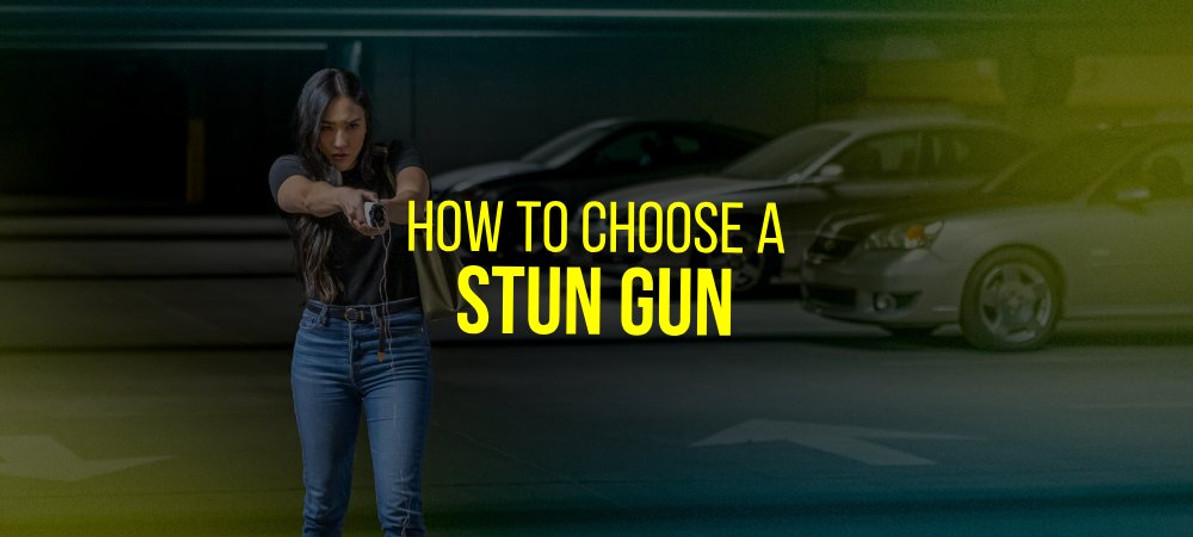How to Choose the Best Stun Gun for Personal Defense
Have you ever found yourself walking alone at night, clutching your keys like a makeshift weapon, wishing you had something more? Or maybe you're just a big fan of the phrase 'safety first'? If so, you might be in the market for a stun gun. But with so many options out there, how do you choose the best one for your personal defense needs? Fear not, this guide is here to help you navigate through the electrifying world of stun guns!
Stun Gun vs Taser: What's the Difference?
The two devices are often confused. After all, both of them are supposed to charge up your attacker with an unwillingness to assault you. And electricity. However, their working principles are not the same. One of them is more forgiving to misses and the other allows you to start defending yourself before the assault cuts the distance between you.
Stun Guns: First off, we have stun guns, which are often compact, easy to use, and can even be disguised as everyday items. The key thing to remember about stun guns is that they require direct contact with the target to deliver a shock. That means you need to be within arm's reach of an assailant to use it effectively.
When activated, a stun gun releases a high voltage, low amperage charge that disrupts the attacker's muscle function. It's kind of like trying to run your computer on a thousand cups of coffee – things short-circuit pretty quickly.
Tasers: Now, let's talk about Tasers. The term "Taser" is actually a brand name that's become synonymous with projectile electroshock weapons, kind of like how we say "Kleenex" instead of "tissue". Unlike stun guns, Tasers can be used from a distance. They fire two electrodes connected to the weapon by conductive wires, allowing you to shock an attacker from up to 15 feet away.
When hit with a Taser, the target experiences severe muscle contractions and an overall sensation of extreme discomfort (to put it mildly). And if the darts miss? No problem, most Tasers can also be used as direct contact stun devices. Just make sure your Taser combines the two before relying on it.
Voltage: The Shock Factor
Voltage in a stun gun refers to the intensity of the shock delivered to the target. It's often mistaken as the measure of a stun gun's strength, but this isn't entirely accurate. While higher voltage can deliver a shock more efficiently, it's not the voltage alone that stops an attacker. It's actually the charge, or amperage, that disrupts the body's electrical signals and incapacitates the assailant.
However, the voltage is still important because it determines how thick of clothing the stun gun can penetrate. Higher voltage means the stun gun can overcome thicker clothing, which can be particularly useful in colder climates where attackers may be bundled up.
The average stun gun voltage is about 25,000 volts, but they can range from a few thousand volts to millions. However, don't get too caught up in the numbers game. A common myth is that super high-voltage stun guns are more effective, but this isn't necessarily true. Even a stun gun with a relatively low voltage can effectively deter an attacker if it delivers a sufficient charge.
In short:
- Higher voltage can deliver a shock more efficiently and penetrate thicker clothing, but it's the charge (amperage) that incapacitates an attacker.
- Don't get too hung up on the voltage numbers; even a lower voltage stun gun can be effective.

Design: Looks Can Be Deceiving
Next up, let's talk about design. There are conventional looking stun guns that scream “Get ready to be shocked” and those that enjoy a more concealable design. A stun gun that looks like an everyday object – like a cell phone or lipstick – can give you the element of surprise. Plus, it's easier to carry around without attracting unwanted attention.
On the other hand, if you prefer a more traditional design, make sure you feel comfortable using it. The following criteria might help you understand whether the stun gun will be a nice fit:
Size and Shape: Stun guns come in all shapes and sizes, from compact models that can fit in the palm of your hand to larger baton-style units. Smaller stun guns are easy to carry and conceal but may deliver less voltage than their larger counterparts. On the other hand, bigger stun guns often pack more power and might include additional features like a flashlight or an alarm. When choosing a stun gun, consider what size and shape you'd be comfortable carrying and using.
Grip: The grip of the stun gun is also important. It should feel comfortable and secure in your hand. Some models have rubberized or textured grips to prevent slipping.
Material and Durability: You'll want a stun gun made of durable material that can withstand being dropped or knocked out of your hand. Many are made of high-quality plastics or aircraft-grade aluminum.
Ease of Use: In a stressful situation, you don't want to fumble with complicated switches or buttons. Look for a stun gun with straightforward operation, ideally one that can be used quickly with one hand.
Safety Mechanisms: To avoid accidental discharge, many stun guns feature safety switches or buttons. Make sure these safety mechanisms are easy to disengage so you can act swiftly if needed.

Additional Features: The Bells and Whistles
Last but not least, consider any additional features that could come in handy.
Flashlight: Many stun guns come equipped with a built-in flashlight. This can be incredibly useful in low light situations, not only to see where you're going but also to disorient an attacker, providing you with a valuable split second to react.
Disguise: Some stun guns are designed to look like everyday items - from cell phones and lipsticks to pens. This feature allows for easy concealment and can provide the element of surprise in a defensive situation.
Panic Alarm: Some models come with a panic or siren alarm. This feature is designed to scare off attackers and draw attention to your situation.
Rechargeable: Many modern stun guns are rechargeable, eliminating the need for batteries. This not only saves money in the long run but also ensures your stun gun is always ready to go when you need it.
Wrist Strap Disable Pin: This is a safety feature that prevents your stun gun from being used against you. If the stun gun is taken away from you during an attack, the pin will be pulled out, disabling the stun gun.
Targeting Laser: Higher-end models may include a targeting laser to assist in aiming at an attacker.
Safety Switch: This feature prevents accidental discharge, which could be both embarrassing and painful!
Shock Plates: Some stun guns have shock plates along the sides of the device. If an attacker tries to grab the stun gun from you, they'll get a shocking surprise.
Let's summarize everything we've learnt so far. Here are the features you'd want to consider.
Design Features
- Consider the size and shape that you'd be comfortable carrying and using.
- Look for a secure grip to prevent slipping.
- Consider whether you want a disguised stun gun for an element of surprise.
- Opt for durable materials that can withstand being dropped or knocked out of your hand.
- Choose a stun gun with straightforward operation for ease of use during stressful situations.
- Check for safety mechanisms to avoid accidental discharge.
Additional Features
- Built-in flashlight for visibility and disorientation.
- Panic alarm to scare off attackers and draw attention.
- Rechargeable batteries for cost-effectiveness and convenience.
- Wrist strap disable pin for added safety.
- Shock plates along the sides to deter anyone trying to grab the stun gun from you.
FAQs
What's the difference between a stun gun and a Taser?
A stun gun and a Taser are both self-defense devices that deliver an electric shock, but they differ in operation and range. A stun gun is a contact weapon, meaning it must be pressed against the attacker to deliver an electric shock. A Taser, on the other hand, can be used from a distance. It fires small dart-like electrodes connected by conductive wires to deliver the shock.
How important is voltage when selecting a stun gun?
Voltage is a crucial factor to consider when selecting a stun gun, as it determines the power of the shock that the device delivers. A higher voltage will result in a more powerful shock, which can incapacitate an attacker more effectively. However, it's important to note that stun guns operate on the concept of high voltage but low amperage, meaning they can deliver a strong shock without causing serious harm or injury.
Are there legal restrictions on owning or carrying a stun gun?
The age requirement to purchase a stun gun in the United States generally is 18 years old. However, this can vary by state. In some states like Arizona and Minnesota, you must be at least 19 years old. In California, minors aged 16 and above can own a stun gun with written consent from a guardian.
Recent Posts
-
The End of an Era: Why Cheaper Than Dirt Stopped Selling Guns
Recently, Cheaper Than Dirt, a major online gun store based in Fort Worth, made headlines by steppin …Oct 24th 2024 -
A Guide to Hunting, Sporting & AR-15 Rifle Barrels
In this post, we’re discussing rifle barrel types in terms of materials, finishes, profiles, twis …Jun 11th 2024 -
Rifle Magazine Variants: Choosing the Right Capacity & Material
We made this quick guide to rifle magazines for all beginner rifle owners wondering what the capa …Jun 3rd 2024




